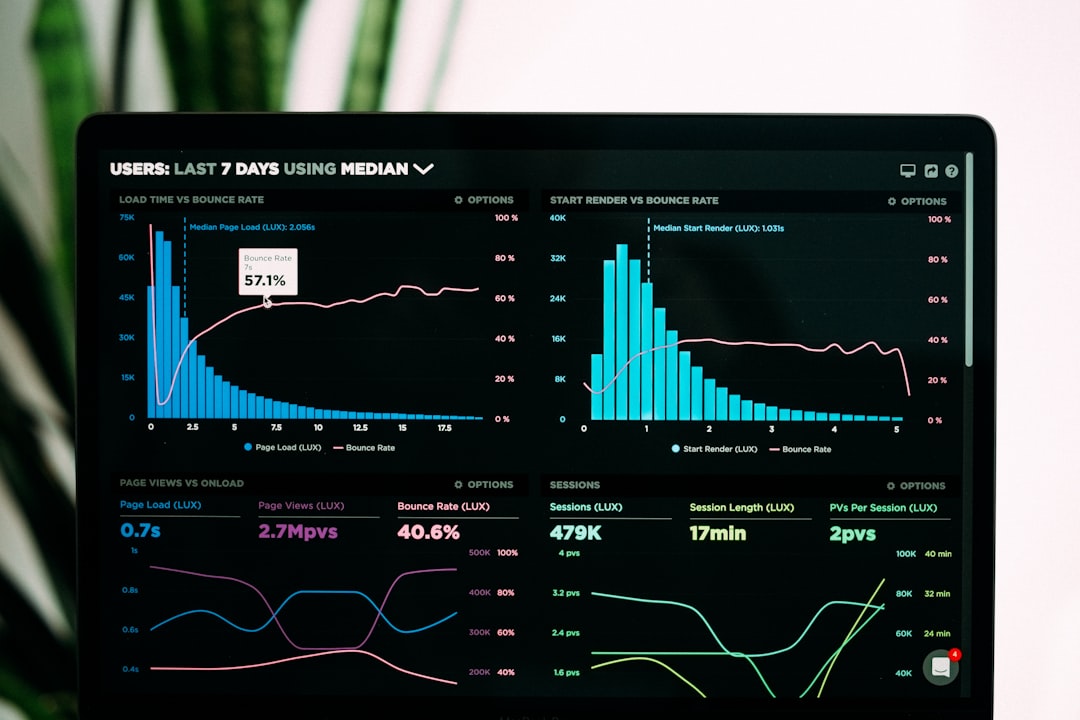Demystifying the UA4 Update: 5 Major Changes in Google Analytics and Why They Matter
Introduction: Understanding the Impact of the UA4 Update in Google Analytics
Google
Analytics is a widely used tool for tracking and analyzing website data. Recently, Google released a major update called UA4, which brings significant changes to the platform. These changes have sparked both excitement and confusion among users, as they impact how data is collected and reported. Website owners and marketers need to understand these changes and how they can improve their analytics strategies. In this
blog, we will demystify the UA4 update by discussing the five major changes in Google Analytics and why they matter. So, if you want to stay ahead of the game and make the most out of your website data, keep reading!
Change #1: Enhanced User Tracking: The Importance of Cross-Device Reporting
One of the major changes introduced in the UA4 update is enhanced user tracking, specifically the inclusion of cross-device reporting. In the past,
Google Analytics primarily focused on tracking user behavior within a single device. However, with the growing prevalence of multiple devices used by individuals, it became crucial to understand how users engage with a website across various devices.
Cross-device reporting allows website owners and marketers to gain deeper insights into user behavior by tracking the same user across different devices. This means that if a user visits your website on their desktop and later makes a purchase on their mobile device, Google
Analytics can now attribute that action to the same user, providing a more accurate representation of their journey.
The significance of this change lies in the ability to understand the true impact of your marketing efforts across different devices. It allows you to see if users are converting on a different device than the one they initially interacted with on your website. This information provides valuable insights into optimizing your marketing campaigns and improving user experiences on different devices.
By utilizing cross-device reporting, you can identify any friction points or inconsistencies in the user journey, allowing you to make data-driven decisions to enhance user experiences and drive more conversions. This change empowers website owners and marketers to better understand their audience, tailor their strategies, and ultimately improve their business outcomes.
In our next section, we will explore the second major change brought by the UA4 update, which is related to data privacy and consent.
Change #2: Event-Based Goals: A Shift Towards Measuring User Engagement
Another major change introduced in the UA4 update is the implementation of event-based goals, marking a significant shift toward measuring user engagement. Traditionally, Google Analytics relied on URL-based goals, which focused mainly on tracking specific page visits or conversions. However, as user behavior and interactions with websites have become more complex, tracking user engagement through events has become increasingly important.
Event-based goals allow website owners and marketers to track specific user interactions, such as button clicks, video views, form submissions, and downloads, as conversions or desired actions. This means that instead of solely measuring the number of page views, website owners can now assess user engagement levels and the success of interactive elements on their site.
The significance of this change lies in the ability to gain a deeper understanding of how users interact with specific features or elements on your website. By tracking and analyzing event-based goals, you can identify patterns and areas for improvement in terms of user engagement. This valuable data can then inform your decision-making process, allowing you to optimize your website and marketing strategies accordingly.
By focusing on event-based goals, you can measure the success of different user interactions and tailor your efforts to improve user engagement. This shift in measurement highlights the importance of understanding how users engage with your website beyond simple page visits, ultimately leading to a more comprehensive assessment of user behavior and improved business outcomes.
In our next section, we will delve into the third major change brought by the UA4 update, which revolves around data privacy and consent.
Change #3: Data Import Improvements: Enhancing Data Accuracy and Completeness
In line with its commitment to providing accurate and comprehensive data, Google Analytics has made significant improvements in data import functionalities with the UA4 update. Data import allows you to seamlessly incorporate external data sources, such as
CRM systems or offline sales data, into your Google
Analytics reports for a more holistic view of user behavior and campaign performance.
One of the key enhancements is the ability to import cost data directly into Google Analytics. This enables you to analyze the ROI of your marketing efforts more accurately by matching campaign costs with user engagement and conversion data. With this feature, you can now gain deeper insights into the effectiveness of your advertising campaigns, optimize your marketing spend, and make data-driven decisions on budget allocation.
Moreover, data import improvements also include the option to import user-level data, enabling deeper analysis of individual user behavior and segmentation. By importing additional information about your users, such as demographics or customer lifetime value, you can create more targeted and personalized reports, enhancing your understanding of specific user segments and driving more relevant marketing strategies.
These improvements in data import capabilities not only enhance the accuracy and completeness of your data but also enable you to unlock valuable insights for better decision-making. In the next section, we will discuss the fourth major change brought by the UA4 update, focusing on data privacy and consent.
Change #4: Enhanced Data Visualization: Making Insights More Accessible
With the UA4 update, Google Analytics has introduced enhanced data visualization capabilities, making it easier for users to derive actionable insights from their data. The new update includes a range of interactive visualizations and charts that allow you to explore your data more intuitively and engagingly.
One of the key features is the addition of customizable dashboards, where you can now create and save personalized views of your data that are tailored to your specific needs. These dashboards can be easily shared with other team members, enabling better collaboration and facilitating data-driven decision-making across your organization.
Furthermore, the update introduces new data visualization types, such as heat maps and flow visualization, which provide a clear visual representation of user behavior patterns. These visualization types can help you identify bottlenecks in your conversion funnel, optimize user journeys, and improve overall website performance.
In addition to the new visualizations, the UA4 update also enhances accessibility by making reports and dashboards more responsive and mobile-friendly. This means you can now easily access and analyze your data on the go, making data-driven decision-making even more efficient and convenient.
These enhancements in data visualization not only make it easier to understand and interpret your data but also enable you to communicate your insights more effectively to stakeholders. In the next section, we will explore the final major change brought by the UA4 update – improved integrations with other Google products.
6. Change #5: Machine Learning Integration: Unlocking Advanced Analytics Capabilities
The UA4 update brings a groundbreaking change to Google
Analytics by integrating machine learning capabilities. This integration enables you to unlock advanced analytics capabilities that were previously inaccessible.
Machine learning algorithms analyze vast amounts of data, spot trends, and patterns, and provide valuable insights that can enhance your decision-making process. With this update, Google Analytics can now automatically detect anomalies in your data and notify you, allowing you to take immediate action and optimize your website’s performance.
Another significant benefit of machine learning integration is the introduction of predictive
analytics. By analyzing historical data, Google Analytics can now provide you with predictions on various metrics, such as user engagement, conversions, and revenue. These predictions help you make data-driven forecasts, plan marketing campaigns, and allocate resources more effectively.
Furthermore, machine learning can assist in audience segmentation by identifying similar groups of users based on their behavior and characteristics. This segmentation allows you to tailor your marketing efforts and messages to specific audience segments, increasing the likelihood of conversion.
The introduction of machine learning in Google Analytics is a game-changer that empowers marketers and analysts to harness the power of advanced
analytics without the need for extensive technical expertise. In the next section, we will discuss how these changes impact the overall usability and user experience of Google Analytics.
Conclusion: Harnessing the Power of the UA4 Update: Leveraging New Features for Improved Business Insights
As the UA4 update brings significant changes to Google Analytics, marketers and analysts must understand and capitalize on the new features and capabilities. In this blog series, we have explored the five major changes in Google
Analytics and why they matter. From a user-centric approach to a more customizable platform, these updates empower users to gain deeper insights and make data-driven decisions.
With user-centric measurement, you can track your customers’ interactions across different devices and touchpoints, allowing for a more comprehensive understanding of their behavior. The integration of machine learning makes advanced analytics accessible and enables automated anomaly detection and predictive analytics, giving you a competitive edge in optimizing your website’s performance and planning marketing campaigns.
Moreover, the enhanced focus on privacy and compliance ensures that Google
Analytics aligns with industry standards and builds trust with your customers.
The UA4 update is a significant step forward in providing marketers and analysts with powerful tools to improve business insights. Take the time to explore and familiarize yourself with these new features to unlock the full potential of Google Analytics and stay ahead in this data-driven era.







